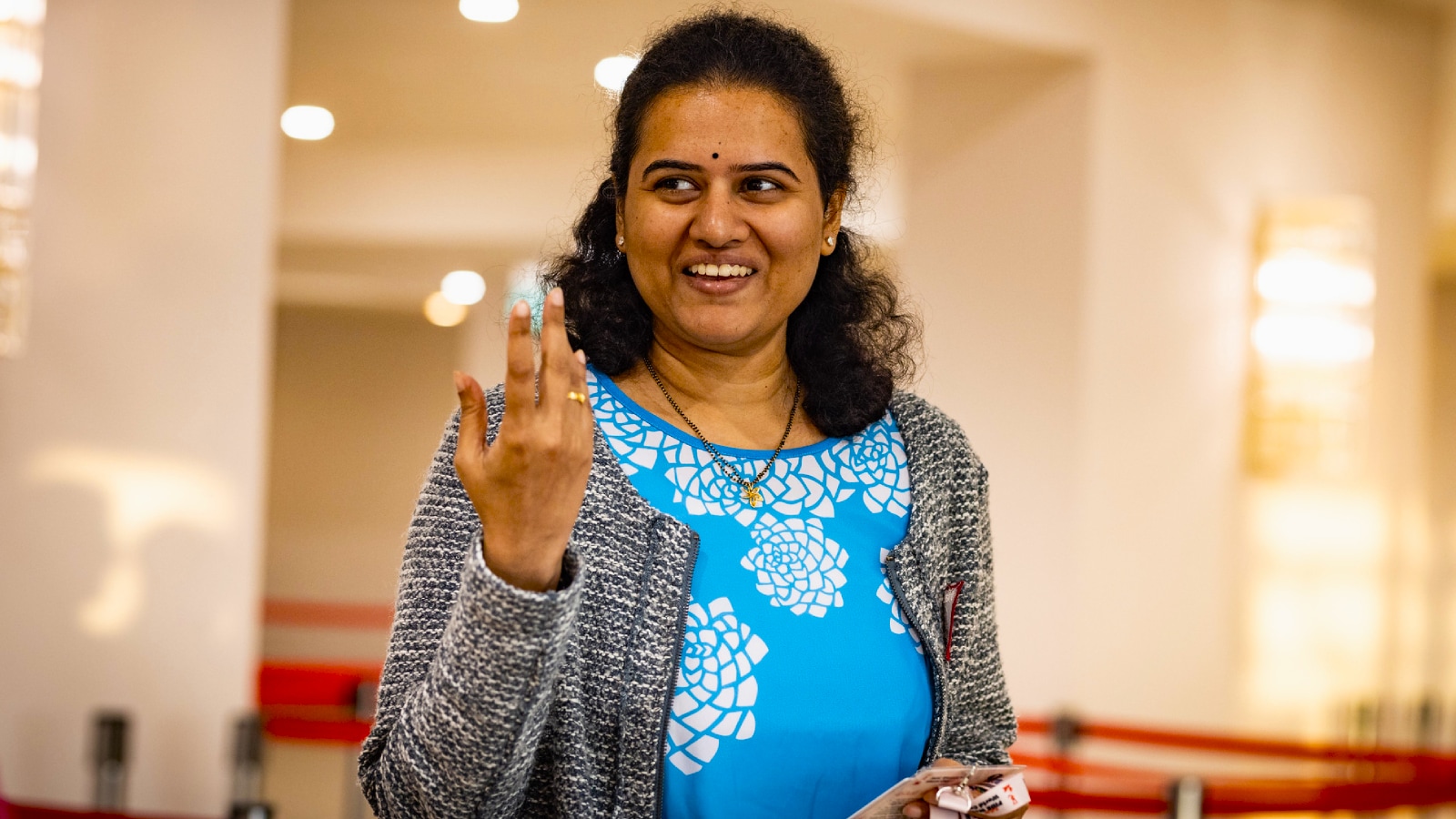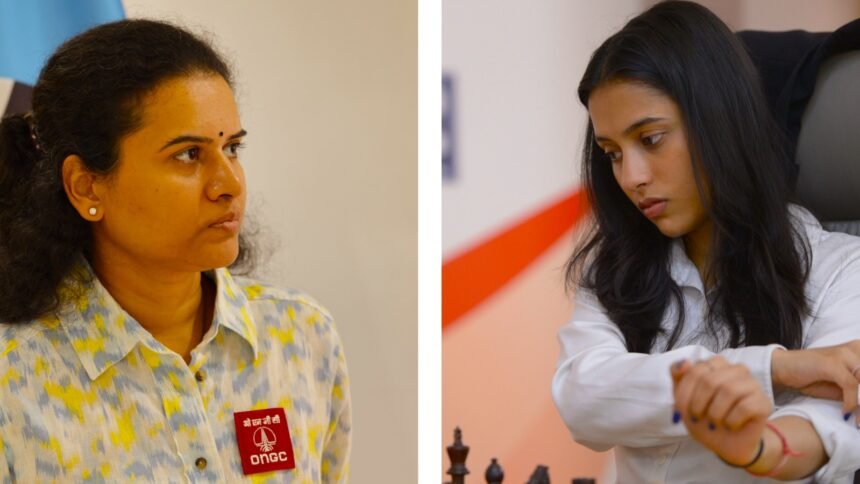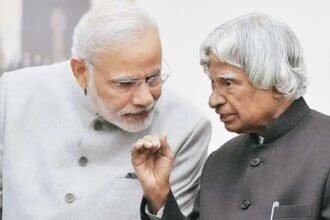Call it a clash of generations: a fight between a teenager experiencing the heady highs of life on the mountaintop for the first time in her career and a grizzled veteran of previous expeditions to the summit, who has found second wind in her career after childbirth.
Or a battle of personalities. A teen who can be endearingly goofy at times, so much so that she smiles at the camera moments before the start of a big battle and apologises to the game clock after knocking it over against a senior pro who turns up for every clash with her game face firmly on.
Or a duel between disruptors. One is a 19-year-old who could become the country’s fourth woman to earn a GM title without needing to collect the three norms that every other GM from India has needed to get, versus a 38-year-old trailblazer who became the first woman from India to become a grandmaster.
The India vs India battle between the veteran Koneru Humpy and the up-and-coming Divya Deshmukh at Georgia’s Batumi will represent the latest rumble of the Indian earthquake shaking up the hierarchy of world chess over the last five years. It is after all two Indians fighting for the title of an event where 107 players from 46 countries, including 17 ranked in the current top 20, were in the fray.
The battle between Humpy and Divya will also be a contest of contrasts over the board. As grandmaster Srinath Narayanan points out, Humpy is a player who comes armed with fewer weapons to a battle, but she’s sharpened them well. Divya, on the other hand, is someone who is likely to have a larger repertoire at her disposal.
“Humpy has a narrow set of openings. But she is well prepared in those and she tends to keep repeating them during a tournament. There will be openings that she prepares for specific tournaments. There won’t be massive variation from that: it won’t be a different opening for each game,” Srinath says.
 An elated Divya Deshmukh reacts after defeating grandmaster Harika Dronavalli in the quarter-finals of the FIDE World Cup. (FIDE/Anna Shtourman)
An elated Divya Deshmukh reacts after defeating grandmaster Harika Dronavalli in the quarter-finals of the FIDE World Cup. (FIDE/Anna Shtourman)
Look at the eight-game battle against Lei Tingjie in the semi-final. Each of the four games that Humpy played with white against the Chinese player started with the Queen’s Gambit (1.d4 followed by 2.c4). This is not to imply that that’s the only opening Humpy has used during the tournament, but to point out that she has been selective with what she wants to fight with.
Story continues below this ad
GM Pravin Thipsay, meanwhile, argues that Humpy is a player who doesn’t actually rely too much on opening prep.
“Humpy plays more on principles. She’s not bothered about the exact move order. She’s not interested in getting an advantage from the opening. At that level, she could be the least prepared player because she plays her own game. Her originality is the matter. Whereas, for other players, particularly from the younger generation, they will have the exact opening preparation up to move 15 or 20. But because of this, you cannot really prepare against Humpy, because she is not going to play what Magnus Carlsen played or Garry Kasparov played,” says Thipsay.
Srinath calls Humpy a prototypical classical chess player, who’s also excelled at the faster time controls when she needed to.
 Koneru Humpy reacts after defeating China’s Lei Tingjie in the tiebreaks of the FIDE Women’s World Cup semi-finals at Batumi. (PHOTO: FIDE via Anna Shtourman)
Koneru Humpy reacts after defeating China’s Lei Tingjie in the tiebreaks of the FIDE Women’s World Cup semi-finals at Batumi. (PHOTO: FIDE via Anna Shtourman)
“In terms of her style, she is quite solid. Her strength is definitely in the classical format as opposed to rapid and blitz, because she grew up at a time when those faster formats were far from mainstream and classical chess was the thing,” says the Chennai-based GM, before analysing Divya’s style: “Divya is aggressive and tactical in style. Although she has become more versatile in recent times, by default, she’s more aggressive and tactical.”
Story continues below this ad
For the uninitiated, positional players focus on long-term strategy. They improve their position by building it block by block over the course of several moves. Tactical players instead look for immediate ways to confront the opponent.
Thipsay offers a checklist of the aspects that could decide the matter at Batumi.
“The match’s fortunes will depend on how sharp Divya is able to make the positions, and how positional Humpy is going to make the game… Humpy’s style is very sound and solid, and she goes more or less for positional games. So the quieter the game, I think, the better chances for Humpy,” he says before adding: “In endgames, Humpy’s accuracy is going to play a very important role, because Divya plays energetically, but her accuracy level is less.”
Divya’s maturity
Grandmaster Abhijit Kunte had pointed out earlier how the tournament had seen the teenage Divya playing with the maturity one would expect from Humpy and the 38-year-old playing with the energetic vigour of her 19-year-old compatriot.
Story continues below this ad
To this, Srinath adds: “I think the final is very inspirational (for Indian chess). On one hand, you have an icon, a 38-year-old woman who is showing that you can do it. And then you also have a young and upcoming player from this generation. Two different sets of role models. And that inspires two different sets of the population and audience. This can have an inspiring effect on more girls taking up chess. But hopefully this won’t just stop with the World Cup and should eventually go towards the Women’s World Championship title itself.”








